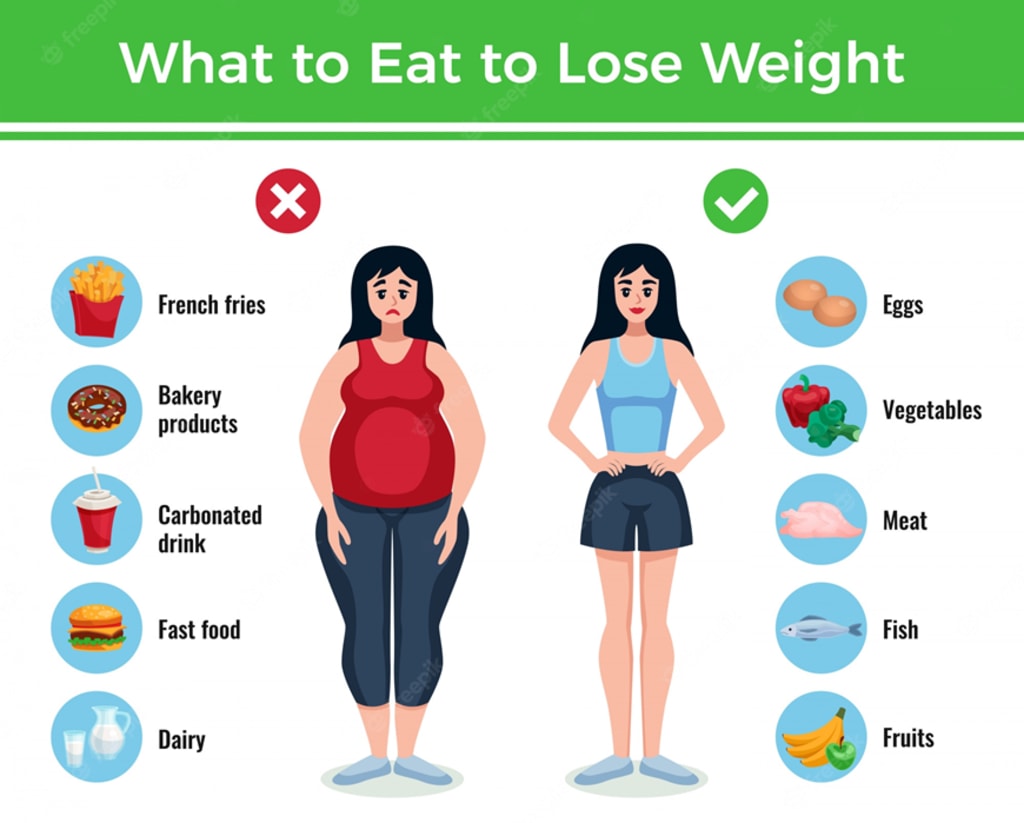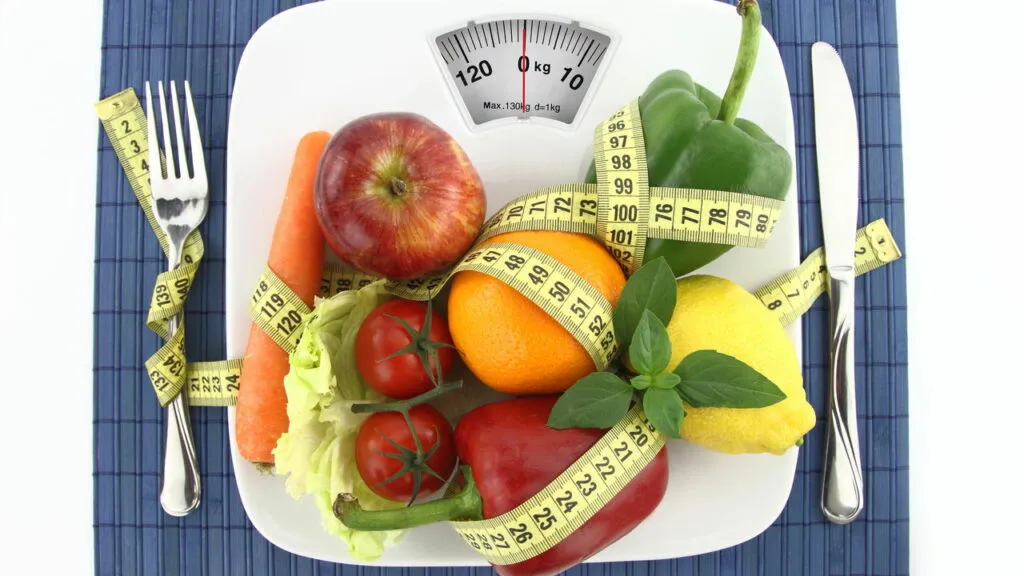How to Lose Weight? Everything You Need to Know
Discover how to lose weight in a healthy and sustainable way. Practical tips, proven strategies, and everything you need for a real and lasting transformation.
Losing weight is one of the most common goals among Americans, but also one of the most challenging. If you've tried to lose weight before and couldn't maintain the results, know that you're not alone. The issue is that most people confuse losing weight with truly getting lean, and this difference could be the key to your success.
In this complete guide, you'll discover everything you need to know about healthy weight loss. We won't talk about miracle diets or magic formulas, but rather science-based strategies that actually work long-term. Get ready to understand how your body works and how you can work with it to achieve your goals.
By the end of this article, you'll have a clear and practical plan to start your weight loss journey safely and sustainably, avoiding the most common mistakes that make people give up halfway through.
Table of Contents
- What Does It Really Mean to Lose Weight
- Rapid Weight Loss: Myth or Reality?
- Why It's So Important to Lose Belly Fat
- Caloric Deficit: The Foundation of Weight Loss
- Strategic Nutrition for Weight Loss
- Exercises That Accelerate Fat Burning
- Factors That Influence Weight Loss
- When to Seek Professional Help
- 15 Practical Tips to Lose Weight Healthily
- Myths and Facts About Weight Loss
What Does It Really Mean to Lose Weight
Many people confuse losing weight with simply seeing a lower number on the scale, but this is a very limited view and can even be dangerous. True weight loss means reducing your body fat percentage while preserving or even increasing muscle mass.
When you just "lose weight," you might be losing water, muscle, and a little fat. But in healthy weight loss, the focus is on eliminating the fat that actually harms your health. The difference is crucial because muscle mass is what keeps your metabolism active and your body functioning well.
The Dangers of Incorrect Weight Loss
Losing weight the wrong way can lead to sarcopenic obesity, a condition where a person has excess fat but little muscle mass. This is especially dangerous because it:
- Drastically decreases metabolism
- Increases injury risk
- Causes weakness and constant fatigue
- Makes it much harder to maintain weight loss
To evaluate if you're losing weight correctly, pay attention not only to the scale but also to your body measurements, physical energy, and body composition. A low-carb diet can be an excellent strategy to preserve muscle while eliminating fat.

Rapid Weight Loss: Myth or Reality?
The burning question: is it possible to lose weight quickly in a healthy way? The answer is: it depends on what you consider "quick" and what your current situation is.
When Rapid Weight Loss Is Possible
For people with significant excess weight, it's normal to lose weight more quickly at the beginning of the process. This happens because:
- The body eliminates a lot of retained fluid initially
- Metabolism is still accelerated
- There's more fat available to be burned
In these cases, losing 4-6 pounds in the first week isn't uncommon. However, after this initial period, healthy weight loss is between 1 to 2 pounds per week.
The Risks of Fad Diets
Be suspicious of any method that promises impossible results in record time. Extremely restrictive diets can cause:
- Deficiency of essential vitamins and minerals
- Loss of muscle mass
- Metabolic slowdown
- Long-term health problems
- Guaranteed yo-yo effect
If you want lasting results, patience is your best ally. Weight loss of 1 pound per week might seem slow, but it represents 52 pounds in a year - an incredible and sustainable result.
Quality diet books can provide you with evidence-based strategies to achieve consistent and healthy results without falling into the trap of quick fixes.
Why It's So Important to Lose Belly Fat
Belly fat isn't just an aesthetic issue - it's one of the biggest threats to your health. Visceral fat, the kind that sits around your internal organs, is much more dangerous than you might imagine.
The Risks of Belly Fat
When you have excess belly fat, you drastically increase your risk of:
- Cardiovascular disease: heart attack and stroke
- Type 2 diabetes: due to insulin resistance
- Fatty liver disease: hepatic steatosis
- High blood pressure and altered cholesterol levels
- Chronic inflammation in the body
How to Identify Excess Belly Fat
A simple way to assess if you have excess belly fat is to measure your waist. For men, measurements above 37 inches already indicate increased risk. For women, the limit is 31.5 inches.
The good news is that belly fat responds very well to changes in diet and physical exercise. Specific foods can accelerate this process, especially when combined with regular physical activity.
For those looking to accelerate belly fat burning, wellness supplements can be great allies, as they help reduce inflammation and improve fat metabolism.
Caloric Deficit: The Foundation of Weight Loss
Here's the absolute truth about weight loss: you'll only lose fat if you're in a caloric deficit. This means consuming fewer calories than you burn during the day. It's pure physics - your body will seek energy from fat stores when it doesn't find enough fuel in your diet.
How to Calculate Your Caloric Deficit
The ideal deficit is between 300 to 500 calories per day. Less than this can be inefficient, more than this can be harmful. You can create this deficit in three ways:
- Reducing caloric intake through diet
- Increasing caloric expenditure with exercise
- Combining both strategies (most efficient)
Strategies to Maintain the Deficit
- Increase protein consumption (they accelerate metabolism)
- Prioritize foods with low caloric density
- Do exercises that combine cardio and strength training
- Stay hydrated to optimize metabolism
A common mistake is creating very aggressive deficits. This can slow down your metabolism and make it much harder to maintain results. The key is finding a deficit you can maintain long-term without feeling excessive hunger or lack of energy.

Strategic Nutrition for Weight Loss
Nutrition represents about 70% of your weight loss success. You can exercise every day, but if your diet is messed up, the results simply won't show up.
Foods That Accelerate Weight Loss
Lean proteins: chicken, fish, eggs, legumes. They have a high thermic effect, meaning your body spends more energy digesting them.
Fiber: vegetables, fruits, whole grains. They increase satiety and regulate blood sugar.
Healthy fats: avocado, nuts, olive oil. They help with vitamin absorption and control hunger.
Foods to Avoid
- Ultra-processed foods (sodas, chips, cookies)
- Refined sugars
- Fried foods and fast food
- Alcoholic beverages (rich in empty calories)
Food Strategies That Work
Eat slowly: your brain takes 20 minutes to register satiety. Chewing well helps you naturally eat less.
Start with salads: fiber takes up space in the stomach and reduces hunger for more caloric dishes.
Eat regular meals: skipping meals disrupts hunger hormones and can lead to overeating later.
For those who want to deepen their knowledge about strategic nutrition, resources like comprehensive diet guides bring valuable information about how different dietary strategies can accelerate weight loss.
Exercises That Accelerate Fat Burning
If nutrition is 70% of the process, exercise is the 30% that makes all the difference. But not all exercise is equal when the goal is burning fat. The ideal combination includes both aerobic and resistance activities.
Cardio for Fat Burning
Cardiovascular exercises are excellent for creating caloric deficit and improving conditioning. The most efficient ones are:
- HIIT (high-intensity interval training): burns calories during and after exercise
- Running: excellent for beginners and can be done anywhere
- Swimming: works the whole body and is gentle on joints
- Cycling: great for those with knee problems
Strength Training: The Secret to Accelerated Metabolism
Strength training is fundamental because muscle consumes energy even at rest. The more muscle mass you have, the more calories you burn 24 hours a day. Additionally, resistance training:
- Preserves muscle mass during weight loss
- Creates the "afterburn effect" (EPOC)
- Improves body composition
- Strengthens bones and joints
Ideal Training Frequency
For optimal results, aim to train at least 150 minutes per week, divided between:
- 3-4 strength training sessions
- 2-3 cardio sessions
- 1-2 active recovery days (walking, stretching)
Home workouts are an excellent option for those starting out or with limited time available.
For those looking to set up a complete home gym, investing in quality equipment like gym equipment or home treadmills can make the difference in maintaining consistency.
Factors That Influence Weight Loss
Besides diet and exercise, there are other factors that can accelerate or sabotage your results. Knowing them is fundamental to optimize your weight loss process.
The Power of Sleep
Poor sleep makes you gain weight. During sleep, your body produces hormones essential for weight loss:
- GH (growth hormone): burns fat and preserves muscle
- Leptin: signals satiety
- Controls ghrelin: the hunger hormone
Those who sleep less than 7 hours per night have a higher risk of obesity. Improving sleep quality could be the game-changer you needed.
Stress: The Silent Villain
Chronic stress elevates cortisol, a hormone that:
- Stimulates belly fat accumulation
- Increases cravings for sweets
- Slows down metabolism
- Impairs sleep quality
Adequate Hydration
Drinking enough water is crucial for weight loss:
- Accelerates metabolism by up to 30%
- Reduces water retention
- Improves digestion
- Controls hunger (we often confuse thirst with hunger)
The recommendation is 0.5-1 ounce per pound of body weight. For a 150-pound person, this represents about 75-150 ounces per day.
Hormonal Factors
Hormonal imbalances can make weight loss very difficult:
- Hypothyroidism: slows down metabolism
- Insulin resistance: facilitates fat accumulation
- Vitamin D deficiency: related to weight gain
- Sex hormone imbalances: affect fat distribution
Managing stress through practices like meditation resources can significantly improve your weight loss results by balancing these crucial hormones.

When to Seek Professional Help
While many people can lose weight on their own, there are situations where professional guidance is essential for success and, mainly, for safety.
Signs You Need Help
- More than 30% above ideal weight: risk of complications is higher
- Presence of diseases: diabetes, hypertension, heart problems
- History of eating disorders: requires specialized care
- Previous failed attempts: there may be unidentified factors
- Medications that interfere with weight: some drugs make weight loss difficult
Types of Professionals Who Can Help
Registered Dietitian: creates personalized meal plans and teaches healthy habits.
Endocrinologist: investigates hormonal issues and prescribes medications when necessary.
Personal trainer: creates exercise programs appropriate to your level and goals.
Psychologist: helps with emotional aspects of eating and habit change.
Medical Procedures for Severe Cases
In situations of grade II or III obesity, medical procedures may be considered:
- Intragastric balloon: temporarily reduces stomach volume
- Endoscopic bariatric procedures: less invasive technique than surgery
- Bariatric surgery: for more severe cases with medical indication
The important thing is to understand that asking for help isn't a sign of weakness, but intelligence. A good professional can accelerate your results and avoid mistakes that cost time and health.
15 Practical Tips to Lose Weight Healthily
Now that you understand the fundamentals, let's get to practical tips you can implement today to accelerate your weight loss:
Nutrition Tips
1. Chew slowly and without distractions: eat away from TV and phone, focusing on flavors and textures.
2. Use smaller plates: this creates the illusion of larger portions and helps control quantities.
3. Start meals with salad: fiber takes up space in the stomach and reduces hunger.
4. Drink water before meals: a glass 30 minutes before can reduce calorie intake.
5. Avoid caloric beverages: sodas, juices, and alcoholic drinks are liquid calories that don't satisfy.
Exercise Tips
6. Find activities you enjoy: it's easier to maintain what's pleasurable.
7. Start slowly: better to do 15 minutes a day than 2 hours once a week.
8. Take the stairs: small changes in daily life make a difference.
9. Walk whenever possible: park farther away, get off the bus one stop early.
Lifestyle Tips
10. Sleep 7-9 hours per night: inadequate sleep sabotages weight loss.
11. Manage stress: practice meditation, deep breathing, or yoga.
12. Keep a food diary: writing down what you eat increases awareness about habits.
13. Plan meals: having a plan avoids impulsive and unhealthy choices.
14. Have social support: share your goals with family and friends.
15. Celebrate small victories: recognize each progress, not just the number on the scale.
Strategic Supplementation
To enhance results, some supplements can be useful:
- Quality supplements can help fill nutritional gaps and support your weight loss journey
- Protein powders facilitate reaching necessary protein intake
- Multivitamins ensure there are no nutritional deficiencies
Myths and Facts About Weight Loss
Let's clarify the main myths that might be hindering your results:
Common Myths
"Carbs make you fat": False. Carbohydrates are important for energy and brain function. The problem lies in excess and the type consumed.
"Fasted exercise burns more fat": Partially true, but can cause muscle loss and reduce performance.
"Light products always help weight loss": False. Many light products compensate for fat reduction with sugar.
"Slow metabolism prevents weight loss": Myth. Metabolism can be accelerated with exercise and proper nutrition.
Important Truths
Sustainable weight loss is slow: losses of 1-2 pounds per week are ideal and lasting.
Aerobic and resistance exercises complement each other: both are important for different reasons.
Genetics influences but doesn't determine: you can work with your genetic characteristics, not against them.
Weight loss isn't linear: there will be ups and downs, and that's normal.

Comparison of Weight Loss Strategies
| Strategy | Speed | Sustainability | Difficulty | Recommendation |
|---|---|---|---|---|
| Extreme diet | High | Low | High | Not recommended |
| Moderate deficit + exercise | Moderate | High | Moderate | Ideal |
| Exercise only | Low | Moderate | Low | Insufficient |
| Diet only | Moderate | Low | High | Not ideal |
Conclusion: Your Journey Starts Now
Losing weight in a healthy and sustainable way isn't about magic formulas or quick fixes. It's about understanding how your body works and creating habits you can maintain for life. True weight loss is a journey of self-discovery and transformation that goes far beyond the number on the scale.
Remember: small consistent changes generate big results. Don't try to implement everything at once. Start with one or two changes, master them, and then gradually add others. Be patient with yourself - your body needs time to adapt and respond.
If you're ready to start your transformation, begin today by implementing the tips from this article. And if you need personalized guidance, don't hesitate to seek professional help. Your health and well-being are worth any investment.
To continue learning about health and fitness, explore our other articles about nutrition for physical activity and the best natural foods. Your transformation journey begins with the first step - and that step is now!
For those who want to dive even deeper into the subject, resources like comprehensive nutrition guides can provide additional tools to accelerate your results safely and effectively.

